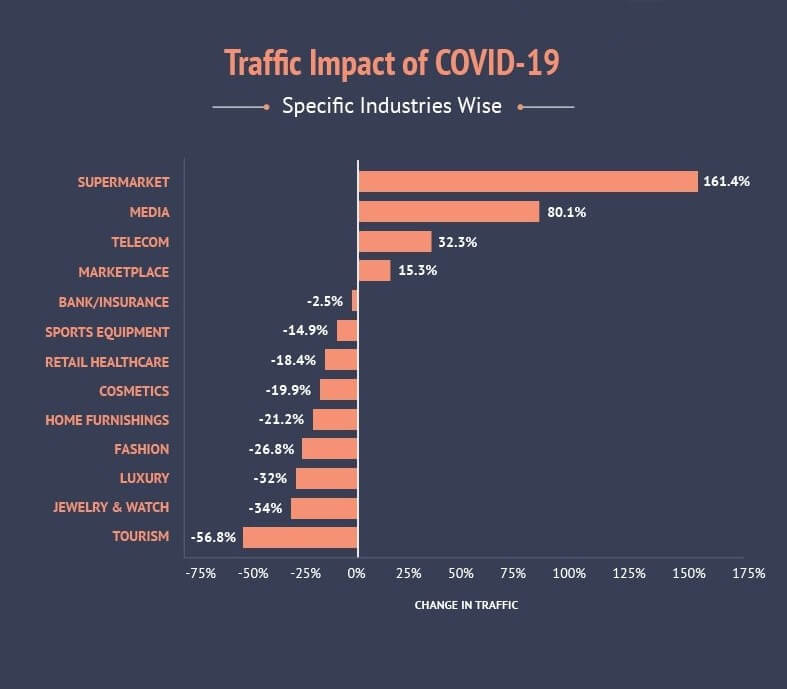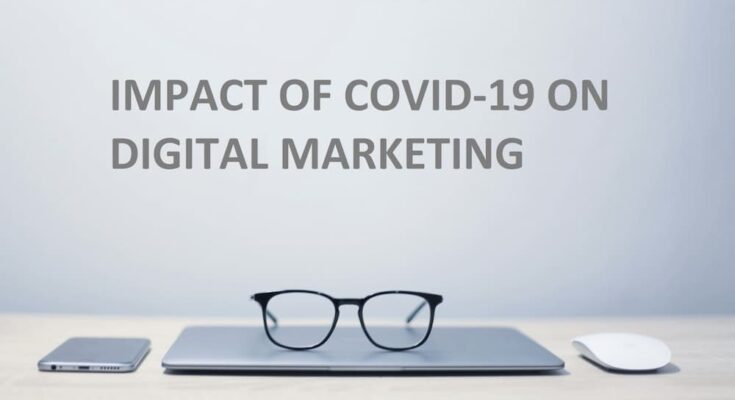How COVID-19 Will Impact Digital Marketing?
The impact of COVID-19 in the first quarter of 2020 on the digital marketing ecosystem was less severe than it was initially being feared. Barring the travel industry, the impact of the pandemic wasn’t really felt until the second week of March. However, what transpired in the following weeks was a long period of uncertainty after worldwide lockdowns were announced and people went on panic buying spree.
While a host of industries and sectors have been impacted in several ways by the COVID-19 health crisis, part of the fallout has also been the changing behavior of web users, leading to the emergence of new online trends that include organic traffic and conversion rates. Let’s have a look on how COVID-19 will impact digital marketing as we buckle up for a bumpy ride through the remaining half of 2020.

Businesses Split in Two Groups
Post COVID-19 businesses have split in two distinct groups: those overwhelmed with orders (groceries, general merchandise, pharmacy, and household goods) or those lacking orders (automotive, home appliances, furniture, luxury goods, and hospitality). In the week ending March 2020, there was 161.4% increase in online traffic in the supermarket segment, while the tourism sector witnessed a decrease in traffic by 56.8%.
Changing Shopping Landscape
In the new reality, the general shopping landscape has changed forever. Shoppers now use a mix of digital touchpoints across their buying journey. Social media feeds, search engines, and influencers are popular ways for shoppers to get engaged during the discovery and evolution part of the journey. However, new purchase points have emerged in the actual buying part of the journey. Mobile wallets now fall behind e-mail as a place to make purchases. Furthermore, 14% of shoppers are making purchases through social media.
The Digital-Only Reality
As non-essential businesses downed their shutters to check the spread of COVID-19, unified channels and customer service became more relevant than ever. The coronavirus pandemic necessitated that both the shoppers and retailers pivot overnight to a digital-only reality. In comparison to Q1 2019, digital sales grew by 18% in Q1 2020. The overall online traffic growth in Q1 2020 was 13% in comparison to Q1 2019. In an unusual trend while Q1 2019 had seen a drop of 9% in desktop traffic, it grew by 9% in Q1 2020. This sudden shift in desktop usage can be attributed to people stuck indoors and not on the move. Social media traffic also increased. While the traffic coming from social media was 6% in Q1 2020, it increased to 8% in Q1 2020.
Unevenly Distributed Surge in Digital Commerce Across Verticals
While few verticals witnessed astonishing growth in Q1 2020, some verticals sagged a bit. DIY and home related products saw formidable growth in Q1 2020, up by 70%. The growth experienced in digital orders of toys, active apparel, and learning was over 35% in Q1 2020. However, there was very little growth in sales of luxury and general apparel by only around 10%, which is lower than Q1 2019.
Emergence of Latest Digital Marketing Trends
Virtual Teams
Digital marketing teams can quickly deploy campaigns while working from home, collaborate, and keep marketers with apps.Empathize With Customers
Digital marketers must empathize with their customers understanding their current situation and address their needs.Personalized Digital Communication
Accelerate the adoption of digital channels to deliver the right message, at the right time, to the right people.Budget Optimization
Digital marketers must make real-time decisions on budget spends to minimize the negative impact.
What Digital Marketers must do in the Coming Months?
The current crisis caused by the COVID-19 pandemic has forced digital marketers to go back to the basics. They need to develop a better understanding of the customers and the basic conversion funnel. The digital marketers need to level up on performance measurement and focus more on the ROI across digital channels.
Balancing the fundamentals of digital marketing with innovation will help digital marketers emerge from the other side of this crisis. There is no dearth of tools and levers that can help them steer through the crisis more quickly and efficiently, if used in the right way.




